Walther Ebeloe 1939
Description
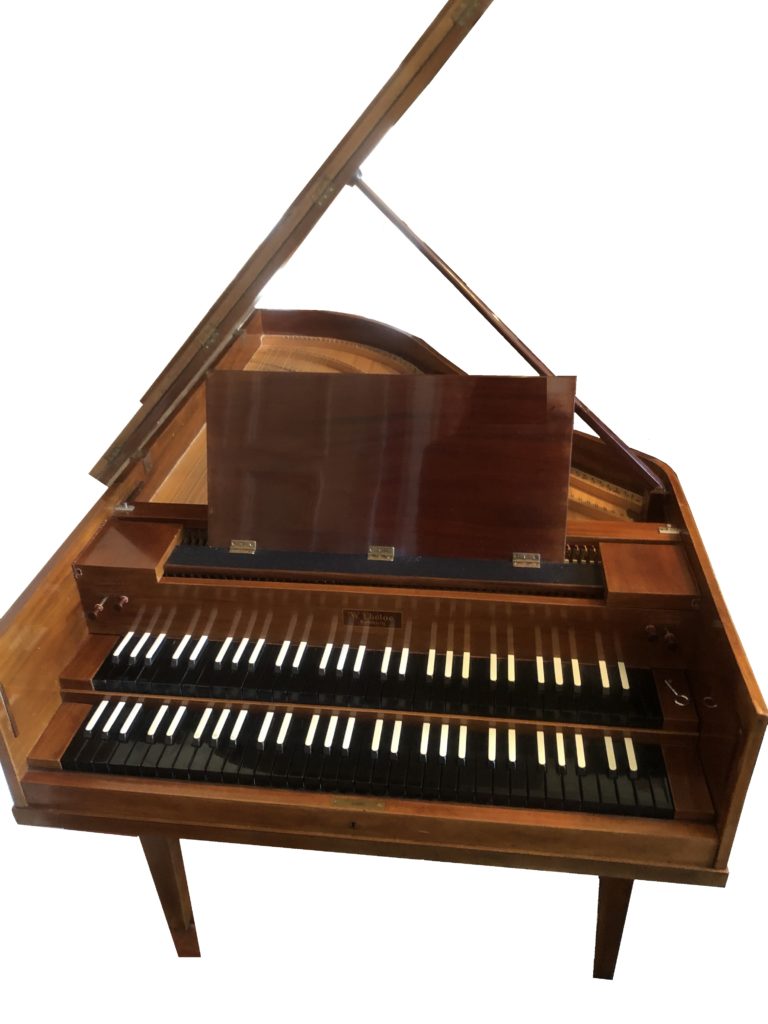
| Date: | 1939 |
| Origin: | Hamburg |
| Serialnumber: | A232 |
The harpsichord underwent a revival in the 20th century. In the 1920s in particular, some musicians and musicologists began to rediscover the harpsichord – after all, in the late 19th century it had long been considered antiquated and unfashionable. It was recognized that the harpsichord has a unique tonal spectrum that differs from that of the piano.
An important pioneer in this revival was the harpsichordist Wanda Landowska (1879 – 1959), who began playing the harpsichord and popularizing it again on concert stages in the 1920s.
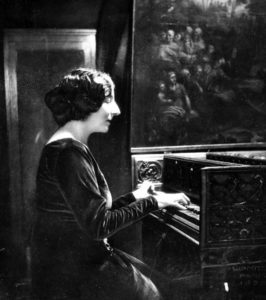
Wanda Landowska 1937
As there was only a limited number of playable historical instruments available at that time, the demand for new instruments grew and many instrument makers had interest in the “new” harpsichord.
The first instrument maker in Hamburg who built harpsichords was Walther Ebeloe. He made the first harpsichords in Hamburg in the 20th century. Since the harpsichord was hardly a major research object at the time, there were less sources and many instrument makers used modern piano construction methods and thus constructed new instruments that represent a kind of hybrid: the sound generation of the harpsichord with jacks and quills in combination with experience and innovations in modern piano construction, as well as modern materials. Partly motivated to build a reliable and perhaps also “improved” instrument, instruments were created that sound little in common with a historical instrument, but in terms of music history they play an important role in preparing the way for today’s historical performance practice.
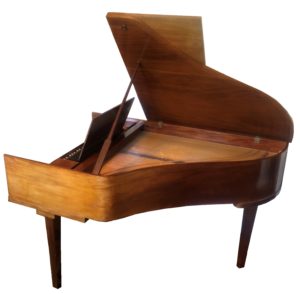
Harpsichord by Walther Ebeloe, Hamburg 1939 – Eric Feller Collection (2)
The harpsichord described here was completed on December 22nd, 1939 by Walther Ebeloe in Hamburg. It is perfectly preserved and in playable condition.
The case is made of walnut with a shellac polish, has a curved shape and stands on 3 legs. From the outside, the instrument looks like a modern, small grand piano. It has 2 manuals with 3 registers (8′, 8′, 4′), lute and manual coupler. The registers can be operated by hand stops on the left and right side. Below the instrument is a knee lever that operates the manual coupler. The quills were originally made of leather and were changed to Delrin. The compass is 5 octaves (FF – f3). The lower keys are covered with plastic and the upper keys are made of ivory.
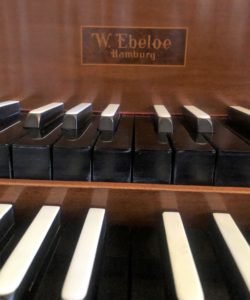
Harpsichord by Walther Ebeloe, Hamburg 1939 – Eric Feller Collection (4)
The signature is inlaid in the centre of the nameboard:
“W. Ebeloe
Hamburg”
The serial number is A232 and is stamped on the first key of the upper manual. The date of manufacture can also be found there with “22 DEZ. 1939”.
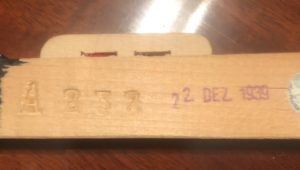
Harpsichord by Walther Ebeloe, Hamburg 1939 – Eric Feller Collection (7)
In many details, the entire instrument shows a construction and structure that comes from modern piano construction (soundboard, keyboard structure, arrangement of the bridge, case…). Ebeloe probably only had a few construction drawings of historical harpsichords so he developed his own action, in which he adapted parts of a modern piano action for the needs of the sound production of the harpsichord. The result is a hybrid instrument with an extraordinary sound, which clearly stands out from the instruments of other instrument makers of the time. It is more similar to the instruments made by the French company of Pleyel.
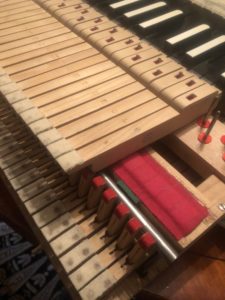
Harpsichord by Walther Ebeloe, Hamburg 1939 – Eric Feller Collection (8)
The sound of the instrument is very strong, but a little reserved in the bass due to the length of the instrument.
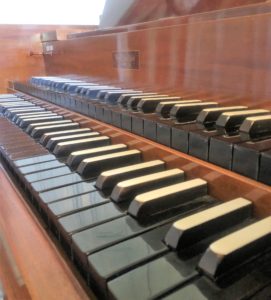
Harpsichord by Walther Ebeloe, Hamburg 1939 – Eric Feller Collection (5)
Walther Ebeloe was born in 1896 and opened his workshop in 1923, where he worked as the first harpsichord maker in the 20th century in Hamburg. During the Second World War, his workshop was completely destroyed by the bombing raids and it was very difficult for him to start again in the late 1940s. Due to a shortage of materials, it was very difficult for him to rebuild his workshop and establish himself again as an instrument maker. He worked primarily as a piano tuner. In the 1950s, Ebeloe entered into a partnership with Wolfgang Wegener (1918 – 1984) in Braunschweig. Both were influenced by anthroposophical ideas and incorporated them into their work. Ebeloe sold the last harpsichord he had built to the composer, pianist and harpsichordist Yngve Jan Trede (1933 – 2010) for DM 12,000.
Walther Ebeloe died in 1982.
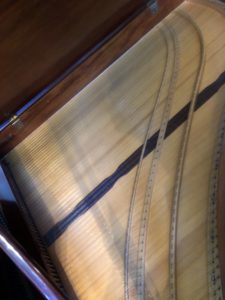
Harpsichord by Walther Ebeloe, Hamburg 1939 – Eric Feller Collection (6)
Sources:
- Hilda Jonas: Harpsichord Festival Scheduled. In: The Harpsichord. Vol. III, No 4, 1970.
- Glendon Frank: Remembering Hilda Jonas. In: The Diapason – Harpsichord News. Dezember 2014.
- Wolfgang Zuckermann: The modern harpsichord, twentieth century instruments and their makers. October House, New York 1969.
- Charles Mould (Hrsg.): Amendments and additions to clavichord-related information in the Third Edition of Donald Boalch’s Makers of the Harpsichord and Clavichord 1440–1840. 1995.
- Hanns Neupert: Das Klavichord. Bärenreiter Verlag, Kassel 1977.
- Olaf Kirsch: De 1900 à 2000 – Un siècle de musique ancienne à Hambourg.
- Kunsthandwerker. In: Hamburger Abendblatt vom 19. Januar 1966.
© Eric Feller – Early Keyboard Collection – February 2023
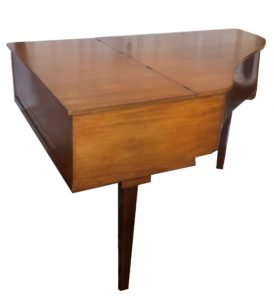
Harpsichord by Walther Ebeloe, Hamburg 1939 – Eric Feller Collection (3)
| Length: | 152 cm |
| Width: | 99,5 cm |
| Height: | 30,5 cm |
| Circumference: | 5 octaves (FF – f3) |
| Mechanics: | wooden jacks with Delrin quills |
| Pedals: | 4 stops (8’, 8‘, 4’), lute and manual coupler |
| Signature: |
"W. Ebeloe Hamburg" „22. DEZ. 1939“ |

